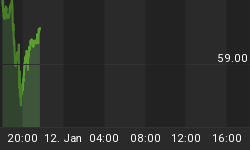Households' cash outlays for goods, services and nonfinancial assets (e.g. houses, SUVs) were approximately $662 billion more than their cash inflows in 2005 - a record in dollar terms and a record 7.3% of disposable income. The history of the dollar value of cash-inflow minus cash-outflow is shown in Chart 1 as "net financial investment," which is defined as households' net acquisition of financial assets (stocks, bonds, deposits, etc.) minus the net increase in their liabilities (primarily, their borrowing). To get a more intuitive feel for the concept of net financial investment, consider the following equation:
(1) Net Acquisition of Financial Assets = Cash Inflow - Cash Outlays + Borrowing
Re-arranging some terms, we get:
(2) Cash Inflow - Cash Outflow = Net Acquisition of Financial Assets - Borrowing
From Equation (2), it follows that if households' borrowing is greater than their net acquisition of financial assets, they must be spending more on goods, services and nonfinancial assets than their cash inflow. As shown in Chart 1, up until 1999, the height of the NASDAQ bubble, households had always run a financial surplus - i.e., their cash inflow exceeded their cash outlays. But starting in 1999, households have consistently run financial deficits on an annual basis.
Chart 1
For the record, Chart 2 shows that households are now running a larger cash deficit than the federal, state and municipal government deficits combined.
Chart 2
Chart 3 shows that the net increase in households' liabilities (their borrowing) is at a record high 13.1% of their disposable personal income.
Chart 3
Chart 4 shows that a record $600 billion of households' borrowing in 2005, representing 6.6% of their dis posable personal income, came in the form of cash advances from their home ATMs - that is, mortgage equity withdrawals.
Chart 4
Despite the rapid increase in the value of residential real estate in recent years, the leverage in this sector remains at elevated levels, as shown in Chart 5.
Chart 5
Some have argued that the leverage in residential real estate represents prudent asset diversification. That is, households have been extracting equity from their homes in order to purchase other financial assets. Chart 6 shows that households might need some asset diversification in that residential real estate in 2005 represented a record 31% of the market value of their total assets. But if households are extracting equity from their houses for diversification reasons, Chart 7 shows that they are not doing a very good job of it inasmuch as households' net acquisition of financial assets as a percent of their disposable personal income at 5.7% in 2005 remains far below the 1952 through 2005 median value of 10.7%.
Chart 6
Chart 7
Some argue that that even though households are taking on a lot of debt, the values of their assets are rising, too. True, but as implied in Chart 8, households' debt is rising at a faster pace than the market value of their assets, hence a record leverage ratio of 18.6% in 2005. If the market value of their assets were to fall, as it did in 2001 and 2002, households' leverage ratio would move still higher unless they liquidated debt, which, in all likelihood, would accelerate the decline in asset values.
Chart 8
Some argue that the buildup in household debt is of little concern because the interest rate on the debt is relatively low. Chart 9 suggests that households must have been "making it up on volume" in that the amount of required principal and interest they must pay represented a record 13.71% of their disposable personal income in 2005. According to David Rosenberg at Merrill Lynch, approximately $2-1/2 trillion of household debt, or 21% of outstanding household debt will reprice (up) in 2006. Unless there is a surge in disposable personal income, the already-record high debt-service ratio will move still higher in 2006.
Chart 9
Some have argued that the Fed has become a serial asset bubble "blower." After the stock market bubble it had allegedly created burst in 2000, the Fed then aided and abetted the creation of a housing bubble. Although not proving these assertions, the data in Chart 10 do show the relative extremes in asset prices in the past ten years.
Chart 10
Some argue that households can and will maintain high growth in their spending because their net worth has rebounded from three consecutive years (2000 through 2002) of declines. Chart 11 shows that relative to disposable personal income, household net worth is almost back to its 2000 level.
Chart 11
But what is not mentioned is that these gains in household net worth might be somewhat ephemeral. There are basically two ways in which households can increase their net worth - spend less than they earn or be fortunate enough to own an asset (e.g., a NASDAQ stock or a house) that rises in value. From 1952 through 2005, the median value of capital appreciation of assets as a percent of the change in household net worth has been approximately 69%. As shown in Chart 12, in the past 11 years, capital appreciation has consistently provided an above-median percentage to changes in household net worth - NASDAQ stocks being the big driver in the late 1990s and residential real estate in the past five years. In 2005, capital appreciation accounted for 102% of the increase in household net worth. If the inflation in house prices is slowing and we are not entering a new super bull market in stocks, how will households keep increasing their net worth going forward? Cut back on their spending?
Chart 12
Are these trends in household finances sustainable? I reported, you decide.
















